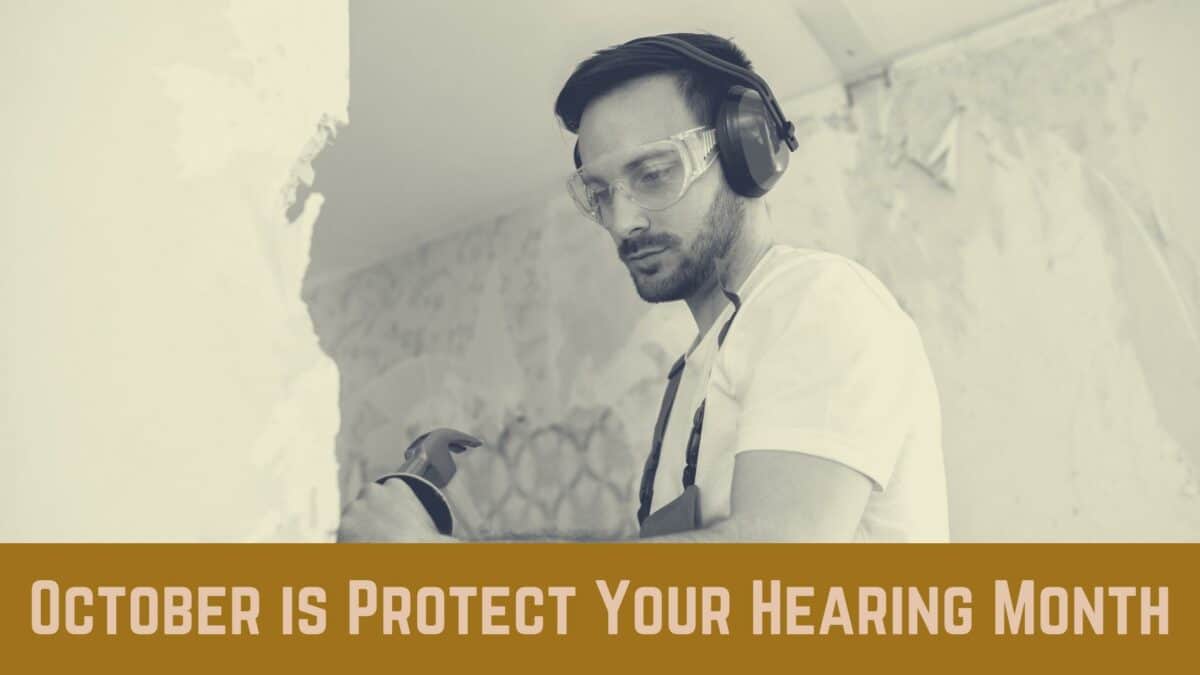This autumn, the CDC and other partner organizations are raising awareness about noise-induced hearing loss: October is Protect Your Hearing Month. Statistics are showing that the most common – and the most preventable – type of hearing loss is on the rise in younger populations. Noise-related hearing loss is almost entirely preventable, but protecting your hearing is a lifelong process.
Current statistics show that around 10% of millennials and 17% of Gen Z currently experience some form of hearing loss, statistics that are much higher than for previous generations when they were at similar ages. Corresponding with a louder world, and widespread headphone use, the rising rates of hearing loss in younger people demonstrate an urgent need for hearing loss education.
How Noise-Related Hearing Loss Works
Noise-related hearing loss can be hard to recognize. Unlike when other parts of our body get injured, hearing damage rarely causes physical pain. Permanent hearing injury can occur without a person “feeling” a thing. While hearing injuries may not be recognized when they occur, they are also more likely to cause permanent damage. This is because loud noises stress the delicate sensory cells we use to detect sound waves. These fragile cells are responsible for translating sound in the air into a signal sent to our brain. When loud noises push them past their breaking point, they become permanently damaged – unlike other types of cells in the body, these cilia or “hair cells” are unable to replace or repair themselves.
Because these hair cells are never restored once they are damaged, our hearing loses accuracy. The more times we expose ourselves to dangerously loud noises, the more likely some hair cells will be taken out of commission, leading to progressing hearing impairment. Hair cells cannot be repaired which is why almost all hearing loss is irreversible. Although hearing loss can happen at any age, it is most often associated with older adults – ages where gradual hearing loss accrued over a lifetime adds up to significant hearing trouble.
A Disturbing Trend
While older adults are still much more likely to experience noise-related hearing loss, it is rising rapidly in younger generations. This may be due in large part to few safeguards and education around healthy listening habits. Most headphones and earbuds do not come with volume safeguards, especially for younger users. The rise of personal media devices and Bluetooth streaming audio mean that young people can be listening to sound at dangerously loud volume without it being noticed by others.
Headphones provide a volume bubble where it can be hard for others to intervene in dangerous listening habits. With the young people of Gen-Z already demonstrating high rates of hearing loss, they are set to be the generation with the highest rate of hearing loss as they age. Education is key.
Protect Your Hearing
Your hearing is not built to withstand loud volumes. At volumes above 85 dB (decibels), about the sound level of heavy highway traffic, your hearing can sustain permanent damage. Live concerts often project sound at volumes around 105 dB cause injury to your ears in less than 15 minutes. Trying to replicate the volume of a live event through headphones or in a home theater system can have the same effect: in under 15 minutes, permanent hearing damage can occur.
It is important to understand and minimize exposure to loud noises. As a general rule, headphones should be used interspersed with “hearing breaks” so your hearing can rest. Being aware of volume levels is very important. When listening through headphones or earbuds, set volume to the lowest level you can discern, about the volume of everyday conversation, to avoid hearing damage. If you are concerned about environmental noise levels in your life, use an app on your smartphone to monitor sound levels. The louder the noise, the less time you can safely listen to it.
Another part of hearing health is regularly having your hearing examined. When you notice changes in the way you hear, a hearing exam can help you understand what the issue is and connect you with treatment if hearing loss is present. While hearing loss cannot be reversed, it can be treated effectively and early treatment is key.

